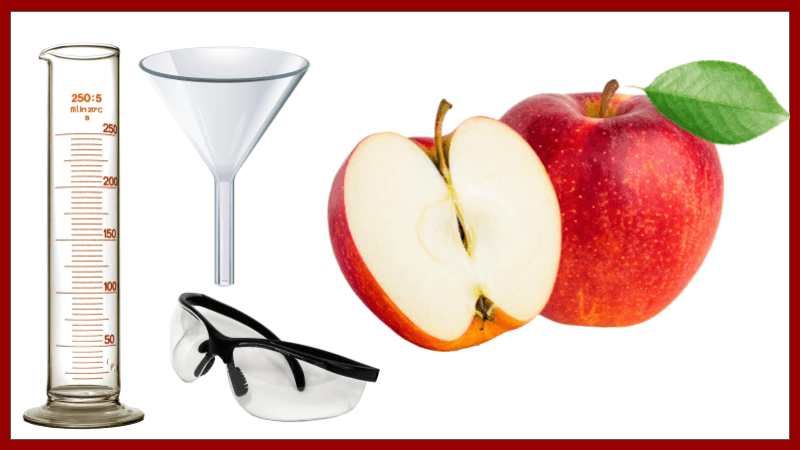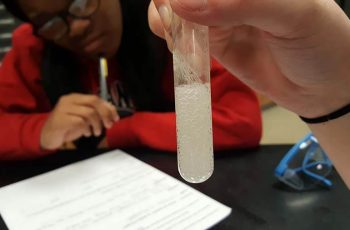Tag: enzyme
-

Investigation: Apples and Pectinase Enzyme
In this experiment, high school students will investigate the role of enzymes by testing the effects of pectinase on apples. The objective is to compare the amount of juice extracted from apples treated with pectinase to those left untreated. In addition, students change the temperature of the solutions to compare enzyme activity at cold and…
-

Case Study – Understanding Lactose Intolerance
I made this case study for freshman level biology to complement Ch 2: The Chemistry of Life. Students review the structure of atoms and molecules, then learn about biomolecules and enzymes. This case study explores the human side of enzymes and proteins. Specifically looking at how humans have a special enzyme, lactase, to digest milk…
-

Enzyme and Substrate Concentrations
Students examine graphical models of enzyme and substrate interactions showing how the speed of reactions changes with concentration.
-

Enzymes and Substrates – Coloring
A simple worksheet showing how enzymes bind to substrates to create products. Students color a graphic and answer questions.
-

Identifying Penguin Species with Restriction Enzymes
In this simple exercise, students simulate how restriction enzymes and gel electrophoresis can be used to identify different species of penguins.
-

Investigation: How Do Enzymes Affect Gelatin
This lab explores enzymes using fresh and canned pineapple to observe enzyme-substrate reactions.
-

Amylase Enzyme and Copy Number Variant
This activity explores a data set on the frequency of copy number variants in the gene AMY1 that codes for amylase activity in the saliva. Amylase is an enzyme that breaks down starch into sugar. The activity builds on the HHMI data point showing how presence of multiple copies of the gene correlate to populations…
-

Exploring Enzymes by Analyzing Graphics
Students examine several images related to enzymes and answer questions. Worksheet covers how enzymes act on substrates, how they lower the activation energy of a reaction, how they have optimal temperature and pH, and how they can be inhibited.
-

Investigation: Model Enzyme Activity with Toothpicks
Use toothpicks to model enzymes. Explore substrate and enzyme concentrations by changing toothpick numbers. Model competitive inhibition by taping fingers.
-

Reinforcement: Biomolecules
This worksheet is used with a unit on biological molecules in an introductory biology class. Students match definitions or descriptions to words provided in a word bank. The anchoring phenomenon in this unit is hagfish slime, which explains the inclusion of this concept in the list. Google Slides and Student Notes for the unit are…
-

StoryLab: How Enzymes Work
This story lab aligns to an investigations students do with enzymes where they put hydrogen peroxide on liver and observe bubbles produced from the reaction with catalase. This investigation has several versions for different levels of biology (regular track, intro, and AP) though the story lab was intended for the intro track students who do…
-

Investigation: How Do Enzymes Work?
This lab is fairly basic, but when given with guided instruction how enzymes catalyze reactions, students can have a hands-on experience into how proteins are related to function.
-

Investigation: Enzyme and Substrate Concentrations
Students who complete the Enzyme Investigation lab can further explore enzymes with this lab on how concentrations of the substrate (hydrogen peroxide) and the enzyme ( catalase) can affect the rate of reaction. In the first experiment, students simply made a judgement about the amount of bubbling to indicate reaction speed, though this is a…

